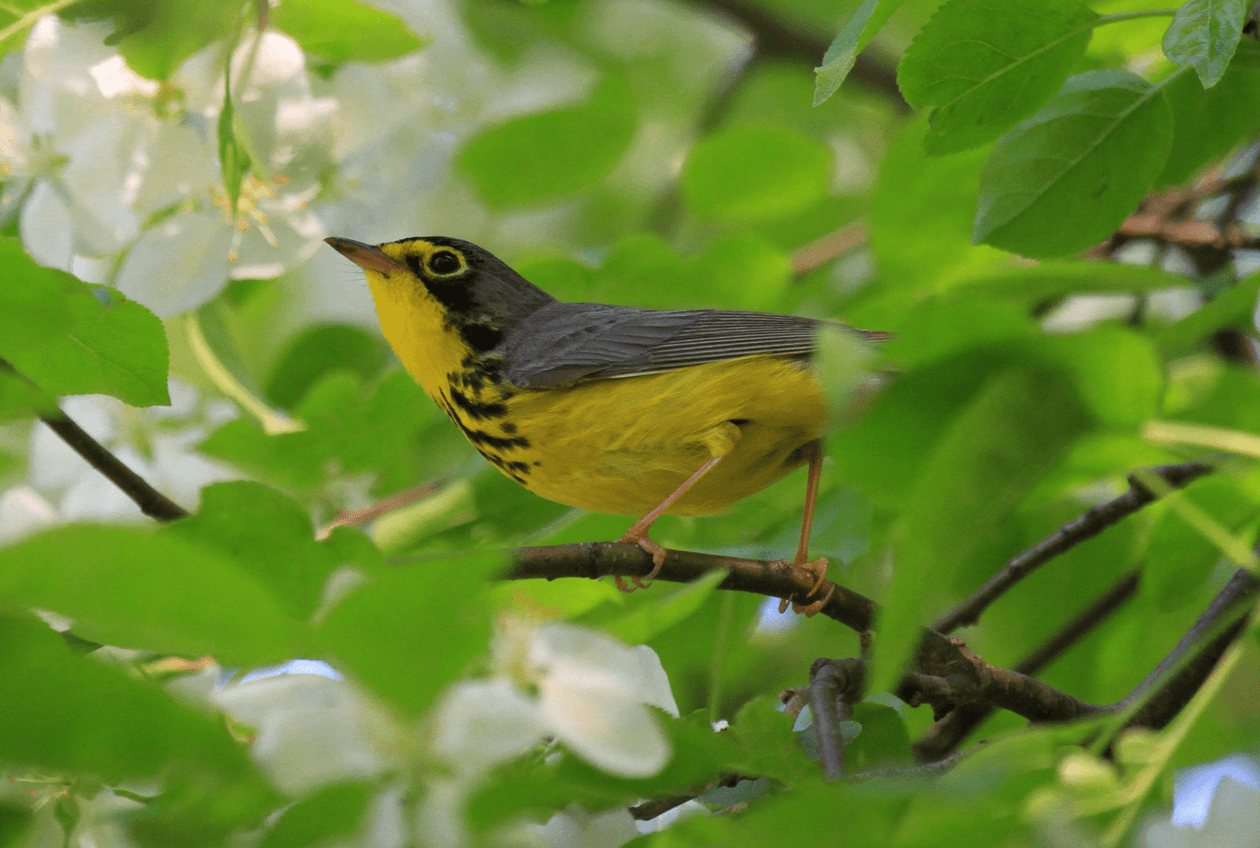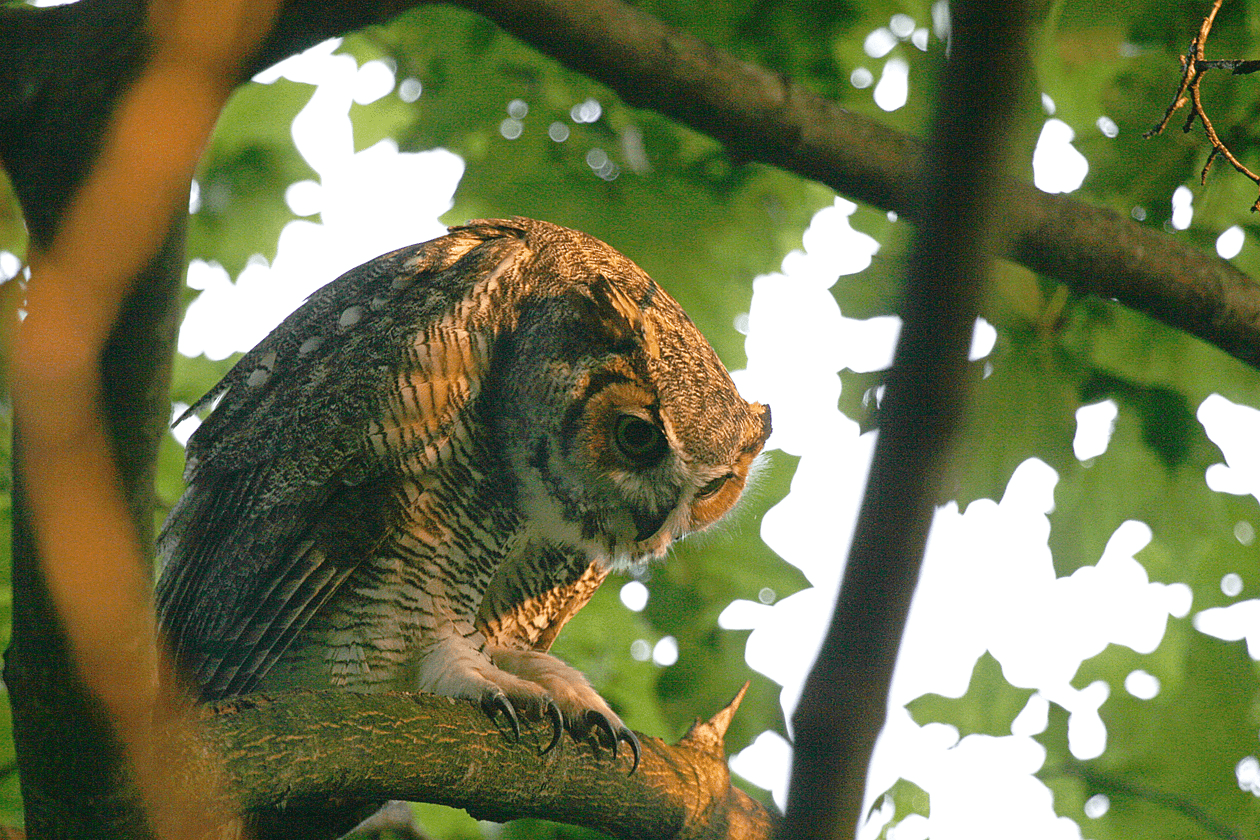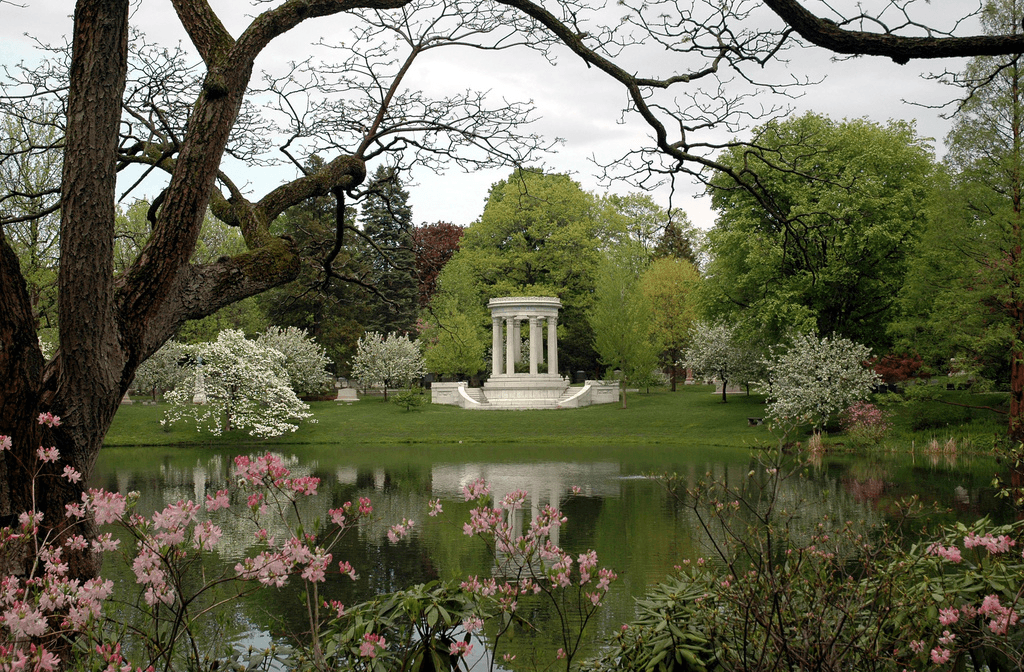At this trail-blazing cemetery, a flock of birders
Halcyon Lake, in Mount Auburn Cemetery
Mount Auburn Cemetery was created in 1831 to change people's idea of death and burial. Today, in addition to being the resting place for a host of famous Americans, it is one of the Boston area’s key wildlife sanctuaries.
“The idea was for this to be a gardens cemetery, when it was created in 1831 by Jacob Bigelow,” says John Harrison, co-author of the book Dead in Good Company: A Celebration of Mount Auburn Cemetery. “You can see from the hills and valleys and the bodies of water, it is very much different than any ordinary cemetery.”
Visitors come to the Cambridge cemetery because it is the final resting place of many American luminaries, but that is not the only reason they come: Mount Auburn is also on the migration path for a variety of rarely-sighted birds — and there is no more enthusiastic group than dedicated birders.
“In May it's like a carnival here,” Harrison says. “There are hundreds of people running around with binoculars and cameras, looking up because these are birds you only see once a year coming up from the south.”
One of the most spectacular birds one can see during the spring migration is the Cape May Warbler, Harrison says. In a normal year, he’d be lucky to spot one briefly from a distance. This year, however, was different.
“They just happened to land, a bunch of them — because they fly all night and when the sun comes up, they all descend to the first green place they see,” Harrison explains. “They landed and spent several days here on Cedar Avenue, which is just unbelievable…For three days you could just look over your head and see three, four, five, six Cape May Warblers coming down to within a few feet of you.”
The other "usual suspects" to be seen at Mount Auburn are Magnolia Warblers, Vireos, Black-throated Green Warblers, the Black-throated Blue and Chestnut-sided Warblers.
“Some years are slower than others, but this year was off the charts. It was just spectacular. People were out of their minds,” Harrison says.

Mount Auburn covers nearly 175 acres and about 100,000 people are buried there. These include architect Charles Bullfinch, Buckminster Fuller, Curt Gowdy (the former sportscaster for the Boston Red Sox), Winslow Homer, author Bernard Malamud, Arthur Schlesinger Jr., BF Skinner, Henry Cabot Lodge, Edwin Booth, Henry Wadsworth Longfellow and many other well-known Americans.
“There are senators, mayors, congressmen, judges — I can't even keep up with all of them. Kim and I are mostly here for the wildlife,” Harrison says.
"Kim" is Kim Nagy, Harrison’s co-editor and essayist for the new book. Nagy wrote specifically about a Great Horned Owl pair that appeared on her first visit to the cemetery in 2011. That year, the Great Horned Owls had two owlets and the two authors got “up close and personal views of the lifecycle of this fantastic species,” Harrison says.
“As Mount Auburn Cemetery was created to change people's idea of death and dying, with our book we wanted to show that this is not just a cemetery, but it's a place of life, regeneration, regrowth, rebirth,” Nagy says. “To chronicle the lives of the owlets, we knew everything about them: their parents — we named them — their first flight and everything else. We thought it was very apt.”

Best-selling author and essayist William Martin is also a frequent visitor to Mount Auburn.
“Because I write historical fiction, a place like this is probably more alive [for me] than it is to most people,” Martin says. “Their stories end up being dramatized in my novels, so it's always a thrill to come where those people have their last resting place.”
An essay from Martin opens Dead In Good Company. One passage reads:
Stories are everywhere in Mount Auburn cemetery. Beneath every marker and atop every monument, everyone who lies here lived as a character in his own drama. Some performed grand deeds; others only dreamed them. But the moments they lived were as vivid, as colorful, as hot or cold, as joyous or terrifying as any that we live now.
This story is based on interviews that aired on PRI's Living on Earth with Steve Curwood
Our coverage reaches millions each week, but only a small fraction of listeners contribute to sustain our program. We still need 224 more people to donate $100 or $10/monthly to unlock our $67,000 match. Will you help us get there today?
